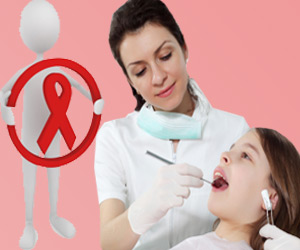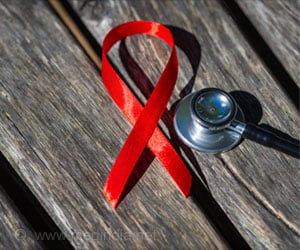Jammu and Kashmir has a new problem to contend with now - a sharp rise in HIV/AIDS cases.
Jammu and Kashmir has a new problem to contend with now - a sharp rise in HIV/AIDS cases. While officials claim there are 745 such cases in the insurgency-hit state, unofficial estimates peg the number at 25,000.
In 1999, there were only two cases reported, writes Grassroots Features. The northern state lies in a low prevalence risk zone, with the infection rate among the high-risk groups (STD-infected) at 0.95 percent and among the low-risk groups at 0.06 percent.However, the influx of migrant labourers, truck drivers, security personnel as well as tourists could result in a rise in HIV/AIDS cases.
In addition, commercial sex, the difficult terrain and socio-cultural diversity pose a tough challenge to spreading awareness about the disease.
"Though Jammu and Kashmir lies in the low prevalence zone, it does not mean that the threat of HIV/AIDS is any less here," said M.A. Wani, project director of the Jammu and Kashmir State AIDS Prevention and Control Society (JKSAPCS).
"Considering the peculiar factors and present circumstances, the state is uniquely positioned and spreading awareness about the virus is a greater challenge," he added.
With only 56 percent literacy in the state, disseminating information and spreading awareness about the disease have not been an easy task. The inhospitable weather conditions and the difficult terrain also pose major hurdles.
The growing number of intravenous drug users and an increase in prostitution has also sparked off fears of a worsening AIDS scenario in the state.
However, in a novel attempt to combat the spread of HIV/AIDS, the JKSAPCS has roped in religious leaders like Muslim imams and Sikh granthis in the state to educate people against the spread of the deadly virus.
Religious leaders are no longer hesitant to talk about safe sex now despite being part of a conservative society. Initially, the programme was implemented in six districts of Kashmir, and nearly 400 imams have been trained so far.
The JKSAPCS is also holding talks with Sikh and Christian priests to involve them in the programme. The initiative draws inspiration from Uganda and Indonesia, where such messages are being propagated through imams.
So far, seminars and awareness programmes imparting complete information about HIV/AIDS have been held for over 600 imams in the state. The JKSAPCS is hoping to train as many Sikh religious leaders and granthis.
The increased presence of police, military, and paramilitary forces in the state has added to the risk factor.
Concerned by the recent increase in HIV/AIDS cases among paramilitary forces deployed in the valley, the state government communicated its concern to the security agencies.
A majority of the cases detected in the Sher-e-Kashmir Institute of Medical Sciences (SKIMS) and the SMHS Hospital in Srinagar belonged to the Border Security Forces (BSF) and the Central Reserve Police Force (CRPF). In fact, such cases were detected during routine tests of the security personnel.
"We have been conducting workshops on HIV/AIDS at the basic unit level and further up in the Northern Command Hospital for educating officers, jawans and their families," said an army spokesperson.
The BSF has introduced a bi-annual health check-up for its doctors. Though the AIDS awareness programme for defence personnel does not come under the ambit of the JKSAPCS, it has been conducting programmes for army, air force and police officers, jawans and their families.
Official figures have, however, recorded only 37 deaths out of the 95 full-blown reported cases here though the real figure is suspected to be higher.
In a survey conducted by international NGO FXB, nearly 85 people infected with HIV/AIDS were found to have died in Jammu's Hiranagar village block alone - which contradicts the claims of the JKSAPCS.
An independent study conducted by Jammu-based clinical immunologist Anil Mahajan notes that HIV/AIDS in the state is no longer a low prevalence disease. Paramilitary forces, truck drivers and housewives were the major affected groups.
Most deaths have occurred among the rural poor with infected locals working outside the state to support their families. Several cases of stigmatisation against the HIV/AIDS patients have also been reported. Unfortunately, no organised care facility exists for the patients.
The Government Medical College in Srinagar and SKIMS only provide patients free medicines for opportunistic infections. While there were only three Voluntary Counselling and Testing Centres (VCTCs) earlier in the state, eight more have been established recently, including one in the Leh district hospital.
A lack of committed NGOs and voluntary organisations in the state that would have otherwise augmented the awareness drive and helped in implementing the programmes is compounding the problem.
"It's very difficult approaching people in diverse areas with the message of HIV/AIDS with such little resources," said S. Vani, a social worker.
With only six local NGOs working along with JKSAPCS, the fight against AIDS in Jammu and Kasmhir, like militancy, is set to be a long drawn one.
Source-Newswise
SRM
 MEDINDIA
MEDINDIA
 Email
Email









